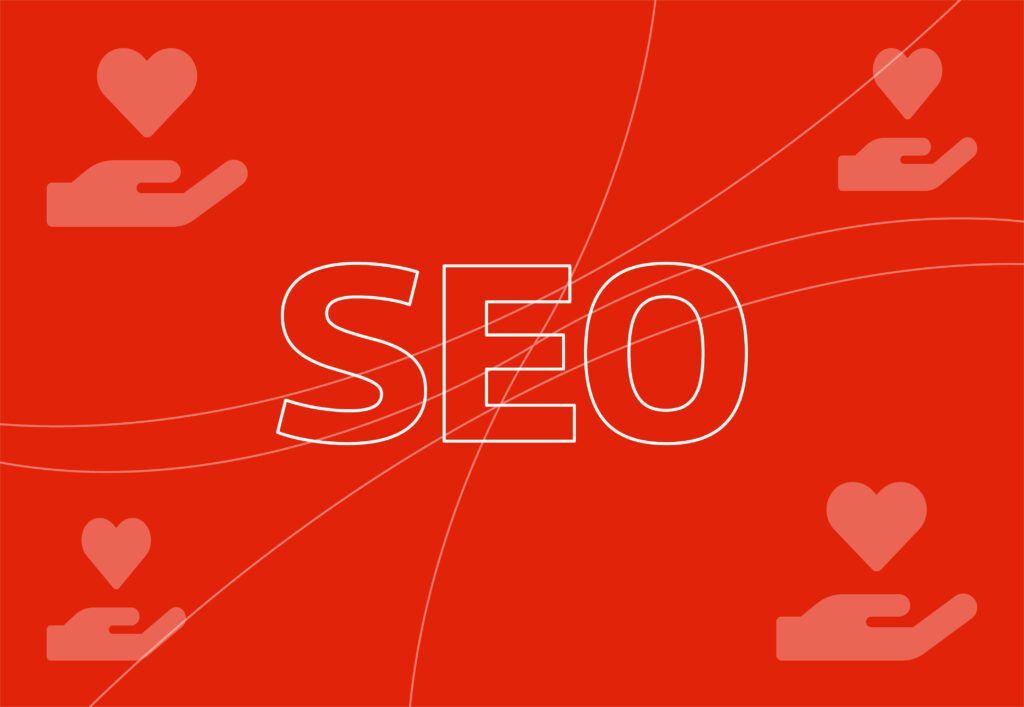
Why should SEO be central to your marketing strategy?

Realistically, digital marketing can feel like juggling. Paid ads, social media, email campaigns, content marketing – there’s a lot to keep track of. But here’s the good news: SEO can actually sit at the centre of all these channels, making everything else more effective.
In this blog, we’ll break down how a strong SEO strategy can inform your content, make paid advertising smarter, amplify social media, and boost email marketing performance. Oh, and because we’re all data-driven marketers here, I’ve sprinkled in over 20+ stats to show why SEO deserves a seat at the head of the table.
By the end, you’ll see that SEO isn’t just a channel – it’s the hub that keeps your digital marketing ecosystem running smoothly.
Why SEO isn’t just a channel – It’s the hub
Think of your digital marketing channels as spokes on a wheel. Paid ads, social media, email, content marketing – they all have their own roles. But SEO? SEO is the hub. Here’s why:
- Organic search drives 53% of all website traffic (BrightEdge).
- Users who find your site organically are more likely to convert than visitors from paid ads (Search Engine Journal).
- A well-optimised site gives context to every other channel, providing data that informs messaging, targeting, and timing (SEOworks).
When SEO is strong, every other channel benefits:
- Paid ads: You know which keywords convert, so ad spend is smarter.
- Social media: Links to optimised pages increase engagement and CTR.
- Email campaigns: Subscribers click on content that’s already ranking for relevant searches.
Pro tip: Treat SEO as the strategic hub rather than just a traffic channel. Your campaigns won’t just get clicks – they’ll create measurable ROI across every platform.
How SEO informs your content strategy
You might already create content for blogs, social media, or campaigns. But without SEO, you’re basically throwing spaghetti at the wall and hoping it sticks. SEO provides a roadmap.
Keyword insights
- Use keyword research to identify what your audience is actually searching for.
- Data-driven content planning means your blogs, social posts, and videos are answering questions people actually ask.
Stats:
- Pages targeting high-intent keywords see 14% higher conversion rates than generic keywords (SEMrush).
- 67% of marketers say SEO insights directly inform their content strategy (HubSpot).
Pro tip: Google Search Console can reveal high-impression keywords you haven’t targeted yet. These are low-hanging fruits for your next blog or landing page. Bonus: tracking keyword performance over time also informs seasonal campaigns.
Content gaps and opportunities
- SEO tools can highlight topics your competitors rank for that you don’t.
- Filling content gaps improves search visibility and provides ammunition for social and email campaigns.
Scenario: Let’s say your competitor ranks for “eco-friendly packaging solutions.” SEO analysis shows a monthly search volume of 3,500, and your site has no content covering this. Writing a blog around this keyword not only improves organic visibility but also gives your social posts and newsletter a ready-made topic.
Paid ads and keyword testing
PPC campaigns can feel like throwing money into a black hole. SEO can make them smarter.
- Run paid campaigns to test keywords before committing to long-form content.
- High-performing ad copy informs blog headlines, meta descriptions, and social posts.
- Paid search data reveals search intent nuances that organic keyword tools might miss.
Stats:
- Businesses that combine SEO and PPC see up to 25% higher conversion rates (WordStream).
- Using paid search for keyword validation can reduce wasted content creation by 20–30% (HubSpot).
- 72% of marketers report that SEO insights improve paid ad performance (BrightEdge).
Pro tip: Don’t just chase traffic – focus on keywords that drive conversions. For example, long-tail queries often convert better in both paid and organic campaigns.
Mini-case study: A B2B SaaS company collaborated with Big Leap to refine its content strategy, leading to a remarkable 507.75% average increase in traffic across optimised posts. One evergreen content piece attracted 128,000 visitors within six months, while another continues to draw 38,000 monthly visitors.
Social media isn’t an island – it’s deeply connected to search.
- Optimised landing pages shared on social channels drive more traffic because:
- Users can find your page after seeing a post (brand recall).
- Meta descriptions and headings increase clickability.
- Users can find your page after seeing a post (brand recall).
Stats:
- 70% of users research brands on Google before following on social (Search Engine Journal).
- Social posts linking to optimised landing pages see higher engagement and CTR (Embryo).
- Companies with strong SEO see 32% more engagement on social posts featuring organic content links (HubSpot).
Pro tip: Use SEO to identify high-performing blog topics to share on social. If your page is already ranking, social users are more likely to engage and convert.
SEO and email marketing: A match made in digital heaven
Email campaigns can leverage SEO to boost performance:
- Optimised landing pages improve click-through and conversion rates.
- Keyword research informs subject lines and preview text.
- Blogs that rank organically provide evergreen content to plug into newsletters.
Stats:
- Emails linking to SEO-optimised content have 35% higher engagement (Litmus).
- Including relevant blog links in newsletters increases website traffic by up to 25% (Embryo).
- Companies aligning SEO and email see 12% higher open rates (Campaign Monitor).
Pro tip: Think of your SEO content as a library of high-performing assets for email campaigns. One optimised blog can fuel multiple newsletters and drip campaigns over months.
Mini-case study: A B2B SaaS company collaborated with a digital marketing agency to optimise their blog content for SEO. Subsequently, they included these optimised blog posts in their email newsletters. The result was a 16% increase in the CTR compared to previous emails linking to unoptimised landing pages.
The technical side: Structured data and cross-channel visibility
Structured data isn’t just for rich snippets – it improves performance across channels:
- Social: Open Graph tags enhance link previews.
- Paid search: Google Ads extensions pull more info from structured landing pages.
- Email: Schema improves preview cards in Gmail and Apple Mail.
Stats:
- Pages using structured data are 30% more likely to appear in rich results (SEMrush).
- Sephora implemented personalised landing pages and content across email, web, and mobile channels. This omnichannel approach led to a 15–20% increase in overall conversions and higher engagement across multiple touchpoints (NGROW).
- Including social media sharing icons in emails can increase the CTR. Research by GetResponse revealed that emails with social sharing buttons got up to 158% more clicks than those without sharing buttons.
Pro tip: Add schema for products, FAQs, how-to content, or events to improve visibility and CTR.
Scenario: Implemented FAQ schema on 1,120 informational pages, resulting in a 9,210% increase in clicks and a significant rise in click-through rates (CTR) from 0.1% to 1.3% (iSocialWeb Agency).
Measuring success across channels
Clicks aren’t the only metric anymore. SEO supporting multiple channels requires broader tracking:
- Impressions: Are your pages being seen across search, social, and email?
- Branded search volume: Are more people searching specifically for your brand?
- Engagement with SERP features: Rich snippets, map packs, and knowledge panels matter.
- Assisted conversions: Users may not click immediately, but are they converting later?
Stats:
- Companies tracking assisted conversions see 15–20% higher overall ROI (HubSpot).
- Branded search grows 3x faster when SEO, social, and email are aligned (Embryo).
- Pages optimised for multiple channels see average engagement lift of 28% (BrightEdge).
Pro tip: Use Google Search Console, SEMrush, and marketing automation platforms to connect the dots between channels.
Putting it all together: Multi-channel SEO wins
Here’s the magic formula:
- Start with SEO data to understand audience intent.
- Test keywords via PPC to validate ideas.
- Create optimised content that’s shareable on social media and plug it into email campaigns.
- Use structured data to enhance SERP visibility and cross-channel engagement.
- Track metrics beyond clicks – impressions, engagement, and assisted conversions matter just as much.
Think of SEO as your central nervous system: every other channel is more responsive, more coordinated, and more effective because of it.
Stats recap:
- Organic search drives 53% of traffic (BrightEdge).
- Paid + SEO campaigns see 25% higher conversions (WordStream).
- Email links to SEO-optimised content boost engagement 35% (Litmus).
- Structured data increases rich result appearances (SEMrush).
- 67% of marketers say SEO insights directly inform content strategy (HubSpot).
The takeaway: SEO is at the heart of digital marketing
Multi-channel marketing doesn’t work in silos. Paid ads, social media, email – they’re all stronger when SEO sits at the centre.
- SEO informs content strategy with real search data.
- Paid ads become less risky and more effective.
- Social media posts reach further and convert better.
- Email campaigns drive traffic to pages that are ready to convert.
In short? Investing in SEO isn’t just about search rankings anymore – it’s about making every channel work harder, smarter, and more cohesively.
Next time someone asks, “Why bother with SEO?” just tell them: it’s the hub that keeps all your marketing wheels spinning smoothly. And if that sounds like your cup of tea, congratulations – you’re already ahead of the curve.



